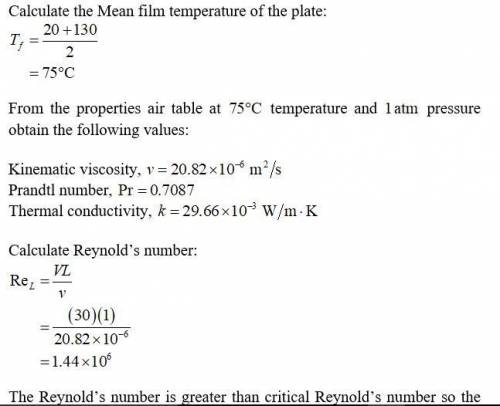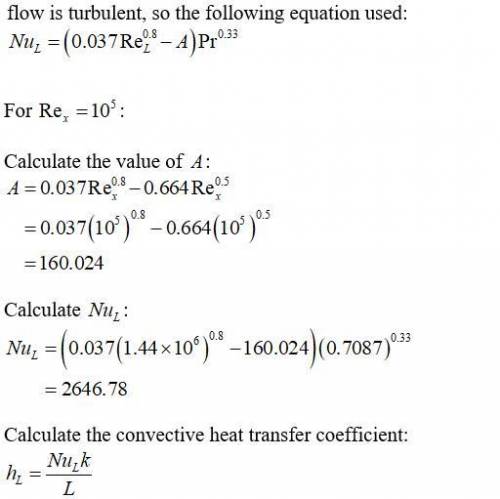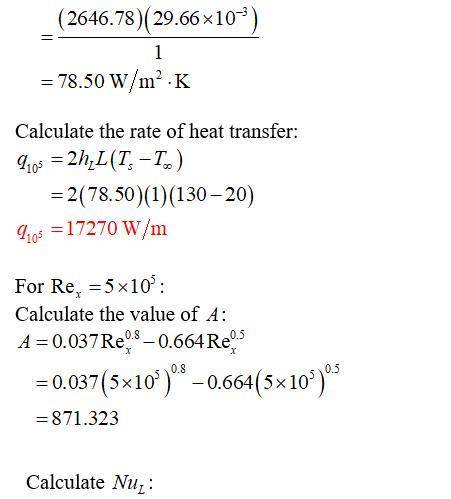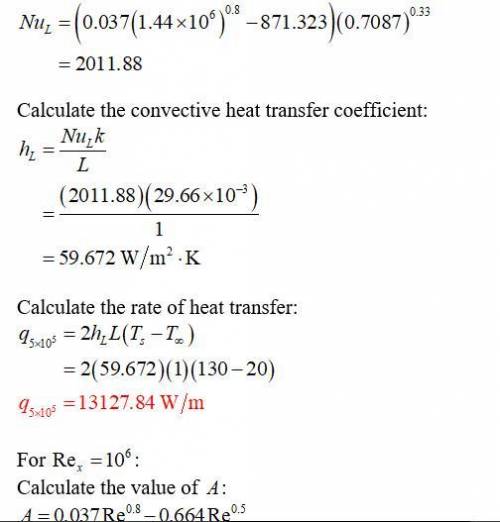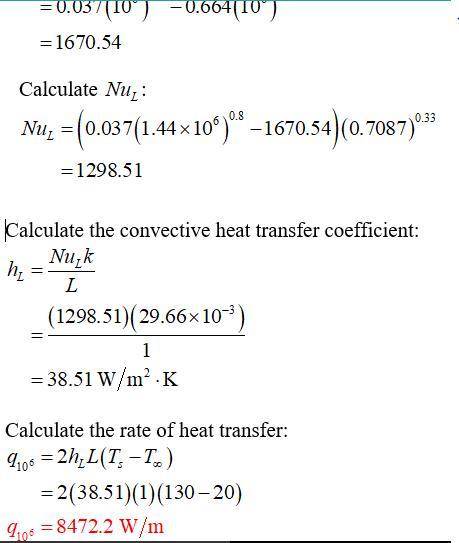
Consider atmospheric air at 20°C and a velocity of 30 m/s flowing over both surfaces of a 1‐m‐long flat plate that is maintained at 130°C. Determine the rate of heat transfer per unit width from the plate for values of the critical Reynolds number corresponding to 105, 5 × 105, and 106.

Answers: 3
Other questions on the subject: Physics

Physics, 21.06.2019 21:20, sophie5064
Jason is a body builder. despite being more fit, he weighs more than his brother ryan, who is the same height. which is a possible reason? a. jason has more muscle mass than ryan does. b. jason has more body fat than ryan does. c. jason has more muscle mass and body fat than ryan does d. jason has less body fat than ryan does.
Answers: 1

Physics, 21.06.2019 21:30, galaxyworld36
Janelle made a hypothesis bout the uneven temperatures inside her house during winter. she believes that 50% of the ducts are blocked and she plans to investigate. if she wants to prove her hypothesis using scientific processes what should she do next?
Answers: 2

Physics, 22.06.2019 02:00, honeybaby675610
Askydiver weighing 140 lb (including equipment) falls vertically downward from an altitude of 19,000 ft and opens the parachute after 18 s of free fall. assume that the force of air resistance, which is directed opposite to the velocity, is of magnitude 0.55|v| when the parachute is closed and is of magnitude 14|v| when the parachute is open, where the velocity v is measured in ft/s. assume that acceleration due to gravity has magnitude 32 ft/s/s; remember that weight is the product of mass and gravitational acceleration. (a) find the speed of the skydiver when the parachute opens. (b) find the distance fallen before the parachute opens. (c) what is the limiting velocity vl after the parachute opens? (d) determine how long the sky diver is in the air after the parachute opens. (e) plot the graph of velocity versus time from the beginning of the fall until the skydiver reaches the ground.
Answers: 1

Physics, 22.06.2019 05:10, zionnahl
Total solidification times of three casting geometries are to be compared: a sphere, a cylinder, in which the length-to-diameter ration - 1.0, and a cube. volume = 1000 cm^3 for all three shhapes, and the same casting alloy is used. a) determine the solidification times of each geometry b) based on the results of part (a), which geometric element would make the best riser? c) if the mold constant = 3.5 min/cm^2 in chvorinov's rule, compute the total solidification time for each casting.
Answers: 3
Do you know the correct answer?
Consider atmospheric air at 20°C and a velocity of 30 m/s flowing over both surfaces of a 1‐m‐long f...
Questions in other subjects:


Mathematics, 26.10.2020 14:00

English, 26.10.2020 14:00



Computers and Technology, 26.10.2020 14:00

Biology, 26.10.2020 14:00



Arts, 26.10.2020 14:00


